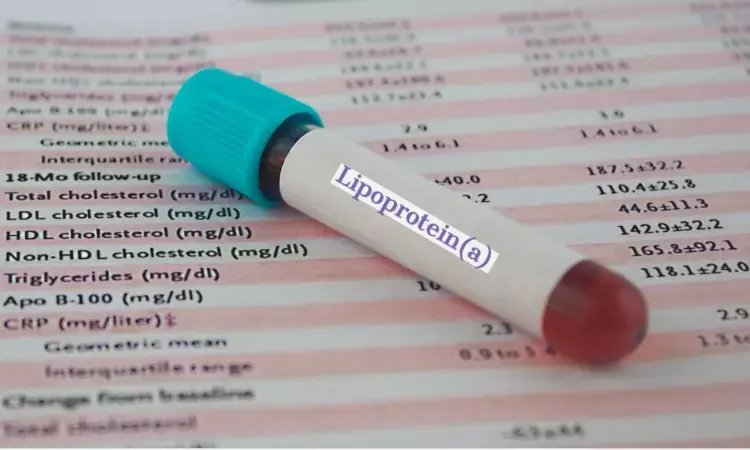- Home
- Medical news & Guidelines
- Anesthesiology
- Cardiology and CTVS
- Critical Care
- Dentistry
- Dermatology
- Diabetes and Endocrinology
- ENT
- Gastroenterology
- Medicine
- Nephrology
- Neurology
- Obstretics-Gynaecology
- Oncology
- Ophthalmology
- Orthopaedics
- Pediatrics-Neonatology
- Psychiatry
- Pulmonology
- Radiology
- Surgery
- Urology
- Laboratory Medicine
- Diet
- Nursing
- Paramedical
- Physiotherapy
- Health news
- Fact Check
- Bone Health Fact Check
- Brain Health Fact Check
- Cancer Related Fact Check
- Child Care Fact Check
- Dental and oral health fact check
- Diabetes and metabolic health fact check
- Diet and Nutrition Fact Check
- Eye and ENT Care Fact Check
- Fitness fact check
- Gut health fact check
- Heart health fact check
- Kidney health fact check
- Medical education fact check
- Men's health fact check
- Respiratory fact check
- Skin and hair care fact check
- Vaccine and Immunization fact check
- Women's health fact check
- AYUSH
- State News
- Andaman and Nicobar Islands
- Andhra Pradesh
- Arunachal Pradesh
- Assam
- Bihar
- Chandigarh
- Chattisgarh
- Dadra and Nagar Haveli
- Daman and Diu
- Delhi
- Goa
- Gujarat
- Haryana
- Himachal Pradesh
- Jammu & Kashmir
- Jharkhand
- Karnataka
- Kerala
- Ladakh
- Lakshadweep
- Madhya Pradesh
- Maharashtra
- Manipur
- Meghalaya
- Mizoram
- Nagaland
- Odisha
- Puducherry
- Punjab
- Rajasthan
- Sikkim
- Tamil Nadu
- Telangana
- Tripura
- Uttar Pradesh
- Uttrakhand
- West Bengal
- Medical Education
- Industry
Lipoprotein(a)-associated atherogenesis may increase Coronary Heart Disease Risk: Study

In a recent genetic analysis published in the Journal of the American College of Cardiology uncovered a compelling evidence that lipoprotein(a) (Lp(a)), a risk factor for coronary heart disease (CHD), holds a significant atherogenicity that is six times greater than low-density lipoprotein (LDL) on a per-particle basis.
After utilizing the genome-wide association studies within the UK Biobank population Elias Björnson and team identified two clusters of single nucleotide polymorphisms related to Lp(a) and LDL concentrations. Both Lp(a) and LDL were found to contain one apolipoprotein B (apoB) per particle which formed the basis for a comparative analysis.
The Mendelian randomization-derived odds ratio (OR) for CHD associated with a 50 nmol/L increase in Lp(a)-apoB was 1.28 (95% CI: 1.24-1.33) which was significantly higher than the corresponding increase in LDL-apoB (1.04; 95% CI: 1.03-1.05). Also, the polygenic scores were used to rank subjects based on the difference in Lp(a)-apoB versus LDL-apoB and this demonstrated a greater hazard ratio (HR) for CHD per 50 nmol/L apoB in the Lp(a) cluster (1.47; 95% CI: 1.36-1.58) when compared to the LDL cluster (1.04; 95% CI: 1.02-1.05).
The findings of this study suggest that the atherogenicity of Lp(a) is approximately six times greater than that of LDL on a per-particle basis, with a point estimate of 6.6 (95% CI: 5.1-8.8). Understanding the heightened risk posed by Lp(a) at the genetic level paves opportunities for drug-based interventions and helped it to emerge as the critical target for therapeutic strategies to reduce CHD risk in a significant proportion of the at-risk population.
The implications of this study could potentially help in reshaping how clinicians approach cardiovascular risk management. As this study delve deeper into the molecular underpinnings of heart disease, this sheds light firmly on Lp(a) by offering hope for more effective and targeted interventions in the treatment against CHD.
Reference:
Björnson, E., Adiels, M., Taskinen, M.-R., Burgess, S., Chapman, M. J., Packard, C. J., & Borén, J. (2024). Lipoprotein(a) is markedly more atherogenic than LDL. Journal of the American College of Cardiology, 83(3), 385–395. https://doi.org/10.1016/j.jacc.2023.10.039
Neuroscience Masters graduate
Jacinthlyn Sylvia, a Neuroscience Master's graduate from Chennai has worked extensively in deciphering the neurobiology of cognition and motor control in aging. She also has spread-out exposure to Neurosurgery from her Bachelor’s. She is currently involved in active Neuro-Oncology research. She is an upcoming neuroscientist with a fiery passion for writing. Her news cover at Medical Dialogues feature recent discoveries and updates from the healthcare and biomedical research fields. She can be reached at editorial@medicaldialogues.in
Dr Kamal Kant Kohli-MBBS, DTCD- a chest specialist with more than 30 years of practice and a flair for writing clinical articles, Dr Kamal Kant Kohli joined Medical Dialogues as a Chief Editor of Medical News. Besides writing articles, as an editor, he proofreads and verifies all the medical content published on Medical Dialogues including those coming from journals, studies,medical conferences,guidelines etc. Email: drkohli@medicaldialogues.in. Contact no. 011-43720751


